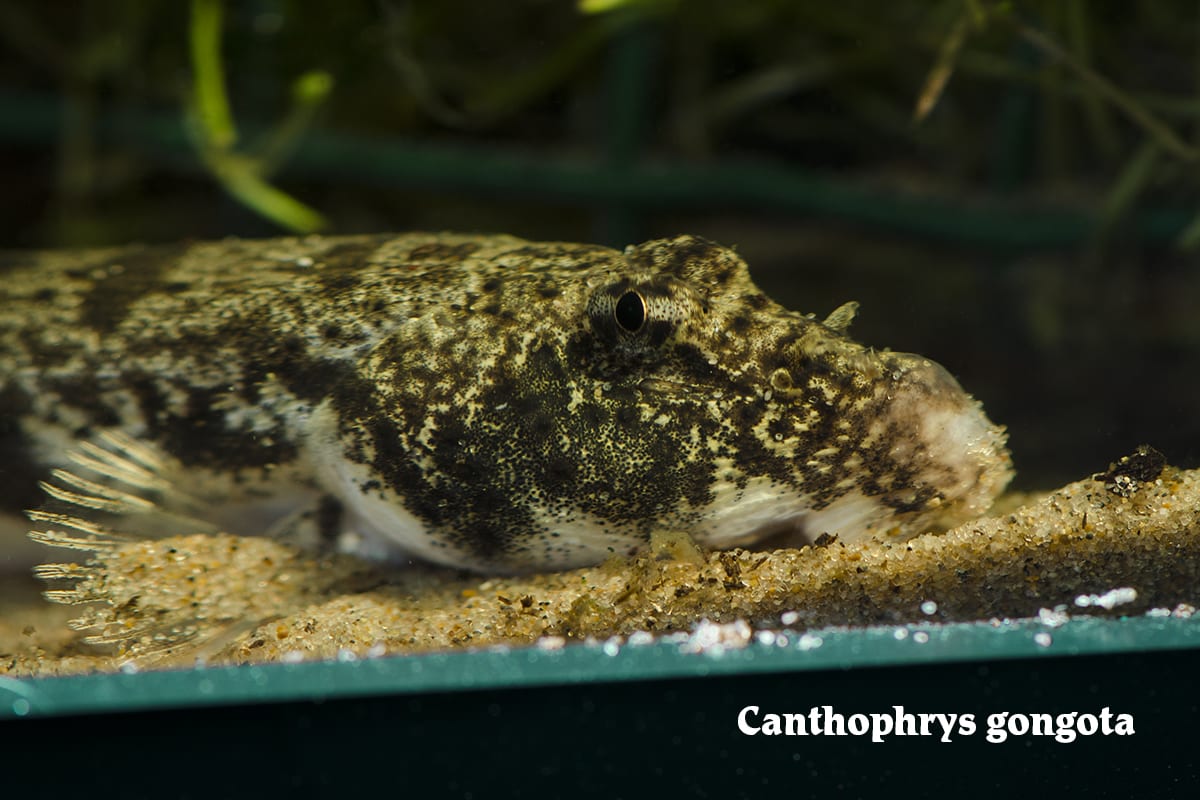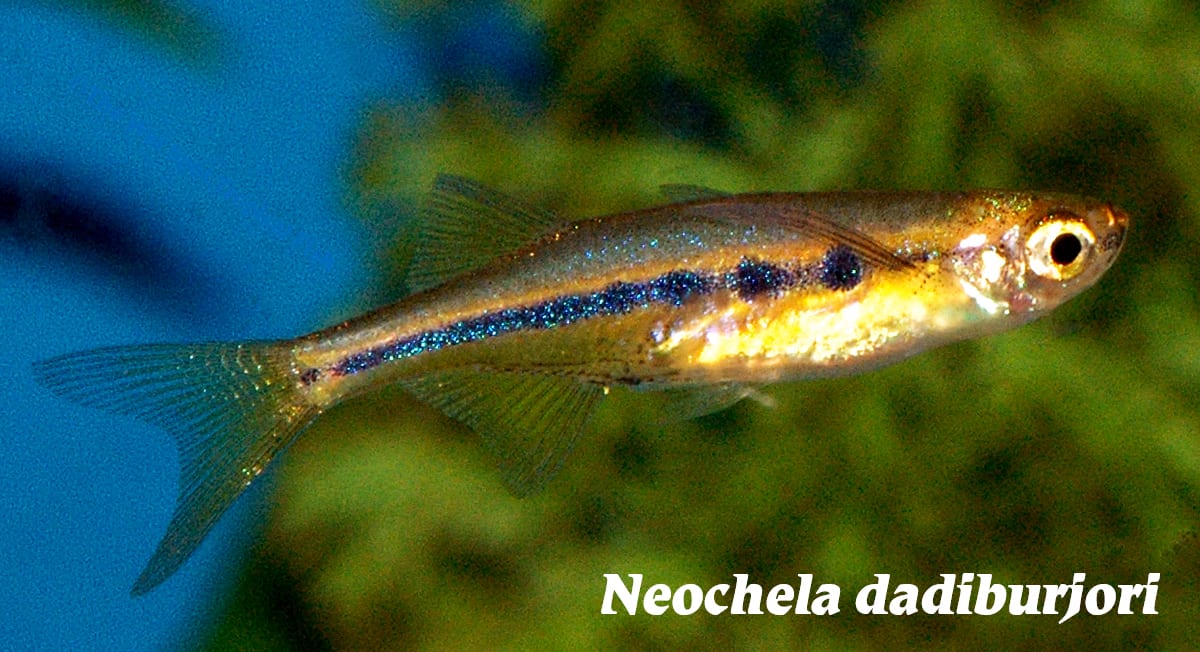Magic “Carp”et Ride
Magic “Carp”et Ride
Considered holy in the Hindu religion, rivers are important in Indian culture- and rightly so. Providing potable water, transportation, and electricity, the value of the vast river systems of India are undeniable- but not only to humans. Originating high in the Himalayas to the north and draining into the seas to the south, India’s 7 major rivers provide numerous micro-habitats for many of the tropical fish we know and love. Think: danios, gouramis, puffers, catfish and so many more! Hailing from the Yenna, Ganges, and Brahmaputra river systems are countless aquarium favorites including Puntis sahyadriensis, Canthophrys gongota, and Neochela dadiburjori.
Scientific NamePuntis sahyadriensis
Common NameMaharajah Barb
Temperature / pH64 to 75°F / 6.0 to 7.8 pH
Native LocationYenna River
Preferred DietSmall invertebrates
Found in stream habitats of the Yenna river basin, flowing through dense vegetation under forest canopies is P. sahyadriensis. Rightly known as “Maharaja Barbs”, they are indeed great and beneficent rulers of their realms. Reaching 2.6 inches in length, these barbs are set apart from close relatives by their angular body shape, enlarged dorsal fins, and their unique color pattern. Exhibiting silver bodies with black diamond-shaped markings and red fins, these barbs are beautifully clad, and the visual effect of schools is quite striking. Generally peaceful and well-equipped for most community tanks, they should be kept in conspecific groups of 8 or more alongside other open-water-dwelling cyprinids of comparable size. Adult males develop white-tipped pelvic fins, and tubercules on their heads during spawning. Egg-scattering by nature, these barbs show no parental care, and when kept in good condition, fry may appear. Omnivorous foragers in the wild, these barbs do best with varied diets including high-quality flake and pellets with regular supplementation of live and frozen fare like artemia or bloodworm, and vegetal matter. Biotope tank set ups should include variable-size water-worn rocks, sand, and fine gravel substrate, driftwood branches, plants, high levels of oxygenation, and some current. Sensitive to poor water quality, weekly water changes of 30-50% are recommended to keep these swimmers in tip-top shape. Tank waters should be maintained with temperatures between 64 and 75°F, pH of 6.0-7.8, and hardness between 36 and 268 ppm.
Scientific NameCanthophrys gongota
Common NameMooseface Loach
Temperature / pH65 to 71°F / 6.0 to 7.0 pH
Native LocationNorthern India
Preferred DietSmall invertebrates
Widely dispersed across the Ganges and Brahmaputra river systems of northern India, C. gongota thrives in slow-moving, shallow tributaries with muddy and sandy substrate. More commonly known as “Mooseface Loaches”, these bottom-dwellers reach 4.5 inches in length, and spend most of their time buried in soft substrate. Exhibiting the characteristic long and skinny body shape of loaches with flattened heads and sucker mouths, they blend in with their chosen background quite well, with tan bodies speckled with dark scales. Timid and not suited for community tanks that house benthopelagic species or other bottom-dwellers, they do best alongside open-water and upper column dwelling cyprinids, and with conspecific groups of 6 or more. Mostly micro-predators by nature, these loaches sift mouthfuls of sand through their gills, seeking small invertebrates, insect larvae, and crustaceans. In captivity they do best being fed sinking, dried foods with regular treats of live and frozen fare. Tanks must be equipped with plenty of open soft, sandy areas, furnishings of the aquarists choice like water-worn rocks or driftwood, leaf litter, and light current. Another species adapted to running water, water quality is of utmost importance, and 30-50% weekly water changes are best. Waters are best kept with temperatures of 65 to 71°F, pH between 6.0 and 7.0, and hardness of 18 to 179.
Scientific NameNeochela dadiburjori
Common NameOrange Dadio
Temperature / pH68 to 75°F / 6.0 to 7.5 pH
Native LocationSouthern India
Preferred DietSmall invertebrates
Endemic to small, tributary streams and freshwater pools in southern India, N. dadiburjori are found among dense riparian and aquatic vegetation. Reaching just over 1 inch in length, these “Orange Dadio” have pointed heads, teardrop-shaped bodies of golden orange, and a dark later stripe. Peaceful and undemanding, they can be kept in most general community tanks in schools of 8 individuals or more. In densely planted tanks, this egg-scattering species with no parental care will spawn, and fry may become present without intervention. More likely to spawn with diets comprised heavily of live or frozen fare, these hatchetfish most likely feed on zooplankton, and small invertebrates in nature. In captivity, they will accept dried foods of suitable size. Ideally housed in heavily planted setups with floating plants, they do best with some water movement and an air-powered sponge filter. Tank waters should be kept with temperatures of 68 to 75°F, pH of 6.0 to 7.5, and hardness between 36 and 179 ppm.
Take a magic “carp”et ride over to our website to check out our lovely Indian freshwater fish selection, and give us a call to add to or start your very own river-system tanks. Namaste fellow aquarists!


